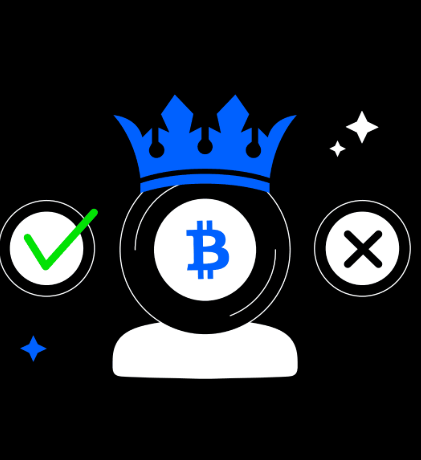A Beginner’s Guide to Crypto Premarket Trading
- 137 Views
- admin
- 05/26/2025
- Cryptocurrency
The cryptocurrency landscape is constantly evolving, offering early adopters the chance to gain a significant edge. One such opportunity is premarket trading—an approach that allows investors to access tokens before their official exchange listing. This guide breaks down what premarket trading involves, how it works, and what to consider before diving in.
Understanding the Crypto Premarket
In traditional finance, premarket trading refers to buying and selling assets before the main exchange session begins. It provides insight into market sentiment based on overnight developments or breaking news. Similarly, in the crypto world, premarket trading involves acquiring tokens or related digital assets before they’re made publicly available on major trading platforms.
The main difference is that while crypto markets operate 24/7, premarket activity usually focuses on tokens that haven’t yet been officially listed. This gives early investors the chance to participate in high-potential projects before they become widely accessible.
How Premarket Trading Works in Crypto
Premarket trades can happen on both centralized and decentralized platforms. In most cases, these platforms function similarly to peer-to-peer systems, where both parties must meet the terms of the agreement before the funds are released.
- Decentralized Platforms: Use smart contracts to lock assets until the transaction conditions are fulfilled.
- Centralized Platforms: Rely on custodial services to hold assets temporarily during trade execution.
Traders typically place buy or sell orders by stating their desired price and quantity. In some cases, a deposit is required as collateral to ensure deal completion. If the transaction doesn’t close by a set deadline, penalties may apply or the deposit may be forfeited.
Categories of Premarket Activity
There are two main types of crypto premarket offerings:
- Pre-TGE Markets: These involve trading tokens before a Token Generation Event (TGE), typically part of presales, ICOs, or IEOs. Investors who gain early access can often purchase tokens at a lower price, hoping for a value surge post-listing.
- Points Markets: Here, users trade protocol points awarded for participating in certain project activities. These points may later be exchanged for tokens or give users an advantage in upcoming airdrops.
How Prices Are Determined
Pricing in the premarket is not fixed. It fluctuates based on various factors:
- Supply and Demand: The balance between what buyers want to pay and what sellers are asking dictates the price.
- Investor Sentiment: If a project is seen as promising, demand increases and so does the price.
- Project News: Developments such as team updates, audits, or partnerships can influence investor confidence.
- Liquidity: Since premarkets are less active than public exchanges, prices are more volatile.
- Speculative Activity: Traders often try to generate hype, creating price swings that may not reflect actual value.
- Platform Features: Some marketplaces impose limits or floors to control price movements.
Pros and Cons of Crypto Premarket Trading
Advantages:
- Early access to promising assets before public availability
- Potential for significant returns if the project succeeds
- Transparent transactions via smart contracts on decentralized platforms
- Fast execution without needing intermediaries
- Participation is open globally with minimal entry barriers
Disadvantages:
- High risk of financial loss if the project fails
- Illiquidity can make it hard to exit positions quickly
- Regulatory gray areas may expose traders to fraud
- Vulnerabilities in smart contract code can lead to asset loss
- Limited data makes proper project evaluation challenging
Steps to Trade in the Premarket
1. Get Set Up
Select a trustworthy platform—either centralized or decentralized. If using a decentralized exchange, you’ll need a crypto wallet like MetaMask. For centralized platforms, registration and identity verification may be necessary. Be sure to fund your wallet or account with the appropriate cryptocurrency.
2. Pick an Asset
Research is critical. Study the project’s whitepaper, token distribution plan, team members, and roadmap. Once confident, you can place an order or fulfill an existing one based on your preferred price and quantity.
3. Complete the Transaction
When conditions are met, smart contracts on decentralized platforms automatically finalize the deal. On centralized exchanges, the platform manages execution. Always be mindful of the risks—premarkets are inherently volatile, and projects in early stages may not deliver on their promises.
Final Thoughts
Crypto premarket trading offers a unique path to invest in tokens ahead of the curve, but it’s not without significant risk. Thorough due diligence, awareness of market dynamics, and a solid understanding of the platform are essential to avoid costly mistakes. For those willing to take calculated risks, premarket trading can be a rewarding venture into the evolving world of digital assets.
Recent Posts
- How AI is Revolutionizing Architectural Design: A Look at Tools, Trends, and the Future
- Streamlining Cyber Risk Assessments Through Automation
- Understanding the Difference Between Blockchain and Distributed Ledger Technology
- Is Bitcoin Mining Still a Viable Venture in 2025?
- Exploring AI: Unveiling Possibilities, Challenges, and Future Implications

